Discover the Spiritual Wonders of the Sacred Monkey Forest in Ubud
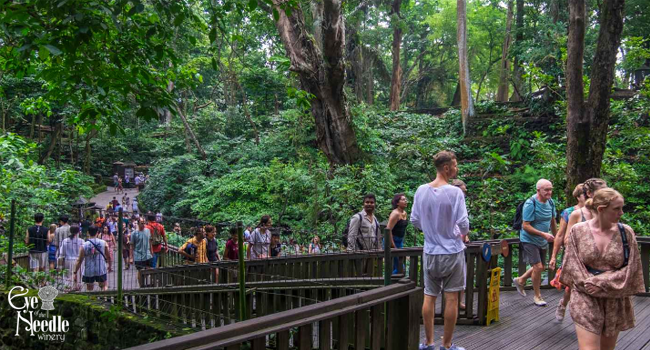
Bali is renowned for its breathtaking natural beauty, rich culture, and spiritual heritage, and one of its standout attractions is the Sacred Monkey Forest in Ubud. This sanctuary is more than just a popular tourist spot; it is a sacred site that offers a unique blend of nature, culture, and spirituality. Nestled in the heart of Ubud, the Sacred Monkey Forest in Ubud is home to hundreds of long-tailed macaques, lush greenery, and ancient temples that date back to the 14th century. The forest provides a serene escape where visitors can reconnect with nature and experience the profound spiritual energy that permeates the area.
Visiting the Sacred Monkey Forest in Ubud is a journey through a landscape where natural beauty and cultural significance intertwine. The forest not only serves as a conservation area for the Balinese long-tailed macaques but also plays a crucial role in the local ecosystem and spiritual practices. With over 186 species of trees, the forest is an ecological haven that offers shelter and sustenance to a diverse range of flora and fauna. This makes it an ideal destination for those seeking tranquility, nature enthusiasts, and cultural explorers alike.
However, the appeal of the Sacred Monkey Forest in Ubud extends beyond its natural allure. It is a place where visitors can immerse themselves in Balinese culture and spirituality, as the forest is home to three sacred temples that are still used for religious ceremonies. These temples, surrounded by ancient trees and moss-covered statues, provide a glimpse into Bali’s spiritual heritage. In this article, we will delve into the significance of the Sacred Monkey Forest in Ubud, explore its unique features, and provide essential tips for those planning to visit this mystical sanctuary.
Introduction to the Sacred Monkey Forest in Ubud

The Sacred Monkey Forest in Ubud is a sacred sanctuary located in the vibrant cultural hub of Ubud, Bali. Officially known as the Sacred Monkey Forest Sanctuary, it covers approximately 12.5 hectares of dense jungle and serves as a home to over 700 Balinese long-tailed macaques. These playful monkeys are an integral part of the forest’s charm and attract thousands of visitors each year who come to see them roaming freely in their natural habitat.
Aside from its playful inhabitants, the forest is also known for its spiritual significance to the local community. Managed by the Padangtegal Wenara Wana Foundation, the forest is not just a tourist attraction but also a place where nature, culture, and spirituality coexist harmoniously. The local villagers believe that the Sacred Monkey Forest in Ubud represents a crucial balance between humans, animals, and the environment, aligning with the Balinese philosophy of “Tri Hita Karana,” which emphasizes harmony between humans, nature, and the spiritual realm.
Visiting the Sacred Monkey Forest in Ubud offers a unique opportunity to observe these fascinating creatures up close while appreciating the serene and spiritual atmosphere of the forest. As you wander through the well-maintained paths, you will encounter various ancient temples, stone carvings, and lush greenery that add to the enchanting experience of exploring this sacred sanctuary.
The Significance of the Sacred Monkey Forest
The Sacred Monkey Forest in Ubud holds a deep spiritual significance for the local community and serves as a place of worship and meditation. The forest is home to three Hindu temples: Pura Dalem Agung Padangtegal, Pura Beji, and Pura Prajapati, each with its own unique purpose and cultural importance. These temples, believed to have been built around the 14th century, are still active sites for spiritual ceremonies and rituals, making them a vital part of the Balinese Hindu religion.
- Pura Dalem Agung Padangtegal: This is the main temple within the forest, dedicated to worshipping the god Hyang Widhi in the form of Shiva. It is considered the most important temple in the sanctuary and is used for regular spiritual practices and religious ceremonies.
- Pura Beji: Known as the Holy Spring Temple, Pura Beji is used for purification rituals before the main temple ceremonies. It is dedicated to the goddess Gangga and is believed to have healing properties.
- Pura Prajapati: This temple is associated with funerary rites and is used for rituals related to the life cycle, including cremation ceremonies. It is situated near a cemetery where the deceased are temporarily buried before being cremated.
The existence of these temples within the Sacred Monkey Forest in Ubud adds a layer of cultural depth, offering visitors a chance to witness the harmonious relationship between the spiritual and natural worlds. This makes the forest not only a place for adventure and exploration but also a site for spiritual reflection and cultural appreciation.
How to Get to the Sacred Monkey Forest
Reaching the Sacred Monkey Forest in Ubud is relatively straightforward, given its central location in Ubud, Bali. There are several ways to get to the forest, depending on where you are staying in Bali and your preferred mode of transportation:
- By Car or Scooter: If you are staying in Ubud or nearby areas, renting a scooter or car is one of the most convenient options. The Sacred Monkey Forest in Ubud is located just a short drive from the Ubud Palace and the Ubud Art Market. Ample parking is available near the entrance.
- By Local Tours: Many guided tours in Bali include the Sacred Monkey Forest as part of their itinerary. These tours often combine visits to other popular attractions like the Tegallalang Rice Terraces, Tirta Empul Temple, and the Ubud Art Market. Opting for a tour can be a hassle-free way to explore multiple sites in one day.
- By Walking: If you are already in the Ubud center, the Sacred Monkey Forest in Ubud is easily accessible by foot. It takes about 15 to 20 minutes to walk from the Ubud Palace to the forest, making it a great option for those who prefer to explore at a leisurely pace while taking in the sights and sounds of Ubud.
Regardless of how you choose to get there, visiting the Sacred Monkey Forest in Ubud is an experience that combines adventure, cultural learning, and spiritual discovery, making it a must-see destination in Bali.
Unique Features of the Sacred Monkey Forest

The Sacred Monkey Forest in Ubud is not only a sanctuary for the playful Balinese long-tailed macaques but also a place of incredible biodiversity and cultural heritage. Nestled in the lush green heart of Ubud, this forest is a living, breathing ecosystem teeming with life and spiritual energy. The Sacred Monkey Forest in Ubud stands out due to its combination of natural beauty, wildlife, and ancient temples that offer visitors an unforgettable experience blending adventure, relaxation, and spiritual reflection. This sanctuary is home to more than 186 species of trees, which provide a habitat for a variety of flora and fauna, making it a must-visit for nature lovers.
In addition to its natural beauty, the Sacred Monkey Forest in Ubud is known for its inhabitants—the Balinese long-tailed macaques—whose dynamic social interactions and playful antics draw tourists from around the world. These monkeys are more than just an attraction; they are an integral part of the local ecosystem and culture. The forest’s management is committed to conservation efforts to ensure the sanctuary remains a healthy and safe environment for both the monkeys and visitors, making it a model for sustainable tourism in Bali. Below, we explore the unique features that make the Sacred Monkey Forest in Ubud such a captivating destination.
Biodiversity: Over 186 Species of Trees and Unique Flora
The Sacred Monkey Forest in Ubud is a botanical paradise that boasts a diverse range of flora. With more than 186 different species of trees, the forest is not just a haven for monkeys but also for various plant and animal species. The towering trees provide shade and shelter, while their roots help maintain the forest’s delicate ecosystem balance. This rich biodiversity is crucial not only for the health of the forest but also for the local community that depends on the natural environment for spiritual and cultural practices.
Several of these trees have spiritual significance to the local Balinese people. For example, the Pala tree (Alstonia scholaris) is often used in traditional medicine and rituals, while the majestic Banyan tree (Ficus benjamina) is considered sacred and is believed to be the dwelling place of spirits. Walking through the Sacred Monkey Forest in Ubud feels like stepping into another world, where every tree and plant has a story and significance. This diversity makes it an important site for environmental conservation and a perfect location for those interested in nature photography and botanical studies.
The Balinese Long-Tailed Macaques: Their Behavior and Characteristics
The Sacred Monkey Forest in Ubud is famously inhabited by over 700 Balinese long-tailed macaques, also known as Macaca fascicularis. These monkeys are an essential part of the forest’s ecosystem and are known for their curious and often playful behavior. Unlike many other primates, the Balinese long-tailed macaques in the Sacred Monkey Forest in Ubud live in matriarchal groups, where the female monkeys hold significant influence over group dynamics and decision-making.
These macaques are highly social animals and display a range of behaviors that are fascinating to observe. From grooming each other to playing in the trees, their interactions offer a glimpse into the complex social structures of primate societies. The monkeys in the Sacred Monkey Forest in Ubud are used to human presence, but it is essential to approach them with respect and caution. They are known to be opportunistic, especially if they suspect a visitor might be carrying food or shiny objects, which they might snatch. Understanding their behavior and characteristics is crucial for visitors to ensure a safe and enjoyable experience within the forest.
Conservation Efforts to Protect the Sacred Forest
The Sacred Monkey Forest in Ubud is more than just a tourist attraction; it is a carefully managed sanctuary that emphasizes conservation and sustainability. The Padangtegal Wenara Wana Foundation, which oversees the forest, implements various conservation efforts to protect the delicate ecosystem of the forest. These efforts include regular maintenance of the trails, management of the monkey population to prevent overpopulation, and educational programs to raise awareness about wildlife conservation.
A key component of the conservation strategy is to keep the Sacred Monkey Forest in Ubud as natural as possible, allowing the monkeys to live in a habitat that closely resembles their natural environment. Additionally, the foundation works on preventing deforestation, managing human-wildlife conflict, and promoting sustainable tourism practices to ensure that both the environment and the local community benefit from the influx of visitors. These efforts help maintain the Sacred Monkey Forest in Ubud as a pristine and thriving ecosystem, making it a model for other wildlife sanctuaries around the world.
With its rich biodiversity, unique wildlife, and commitment to conservation, the Sacred Monkey Forest in Ubud stands out as one of Bali’s most treasured natural and cultural landmarks.
The Sacred Temples within the Monkey Forest
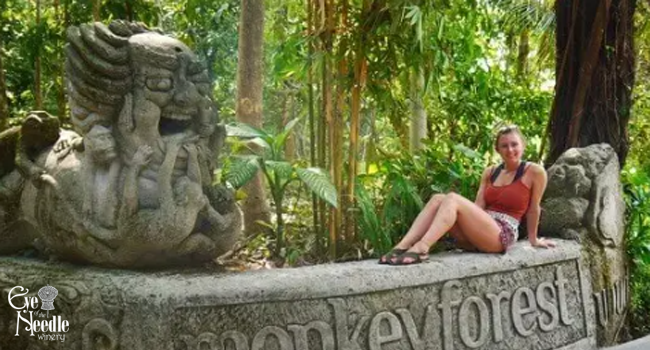
One of the most intriguing aspects of the Sacred Monkey Forest in Ubud is its collection of ancient temples that reflect the deep spiritual heritage of Bali. These temples are not merely historical monuments; they are active spiritual sites where local Balinese people continue to practice their faith. Nestled among the dense greenery and winding paths of the Sacred Monkey Forest in Ubud, these sacred structures provide a serene and mystical atmosphere that attracts both pilgrims and tourists alike. The forest itself is a sacred place, and these temples embody the spiritual connection between the local community and their natural surroundings.
Visitors to the Sacred Monkey Forest in Ubud will encounter three main temples, each with its unique significance and function within the Balinese Hindu culture. These temples—Pura Dalem Agung Padangtegal, Pura Beji, and Pura Prajapati—are not only significant for their religious practices but also for their stunning architecture, stone carvings, and intricate details that showcase Bali’s rich cultural heritage. Below, we explore each of these temples in more detail, revealing the roles they play in the spiritual and cultural life of the local community.
Pura Dalem Agung Padangtegal: The Main Temple
Pura Dalem Agung Padangtegal, often referred to as the “Main Temple,” is the largest and most important temple in the Sacred Monkey Forest in Ubud. This temple is dedicated to the god Hyang Widhi in the form of Shiva, the destroyer and transformer within the Hindu trinity. As the primary spiritual center within the forest, Pura Dalem Agung Padangtegal serves as a site for daily worship, religious ceremonies, and spiritual rituals conducted by the local community.
The temple’s architecture is a classic example of Balinese design, featuring ornate stone carvings, guardian statues, and towering gates that exude a sense of sacredness. The temple area is adorned with statues of Rangda, a mythological demon queen in Balinese culture, adding to the temple’s mystical aura. Although visitors are not allowed to enter the innermost sanctum where prayers and rituals are performed, they can still admire the temple’s exterior and feel the spiritual energy that permeates the surroundings. For those interested in the cultural and spiritual life of Bali, Pura Dalem Agung Padangtegal is a must-see highlight within the Sacred Monkey Forest in Ubud.
Pura Beji: The Holy Bathing Temple for Purification
Pura Beji, known as the “Holy Bathing Temple,” is another significant temple within the Sacred Monkey Forest in Ubud. This temple is dedicated to the goddess Gangga and is primarily used for purification rituals. Before major ceremonies or festivals, local Balinese Hindus come to Pura Beji to cleanse themselves physically and spiritually, a practice that is believed to purify the body and soul from any impurities or negative influences.
The temple is located near a clear, flowing spring, which is considered sacred. The water from the spring is used in ritual bathing, making it an essential part of the purification process. The architecture of Pura Beji is notable for its intricately carved stonework and natural surroundings, which add to its tranquil and serene ambiance. Surrounded by dense foliage and the sounds of flowing water, the temple offers a peaceful retreat for meditation and reflection. For visitors to the Sacred Monkey Forest in Ubud, Pura Beji provides a deeper insight into the spiritual customs and traditions that are central to Balinese culture.
Pura Prajapati: A Temple for Funeral Rites
The third major temple in the Sacred Monkey Forest in Ubud is Pura Prajapati, which is dedicated to Prajapati, the Hindu god of creation. This temple plays a crucial role in the cycle of life and death within the Balinese Hindu tradition, as it is associated with funeral rites and ceremonies. Pura Prajapati is located near a cemetery where deceased members of the community are temporarily buried before their cremation. Cremation is an essential ritual in Balinese culture, symbolizing the release of the soul from the body and its journey to the afterlife.
The architecture of Pura Prajapati is more understated compared to the other temples, reflecting its somber purpose. However, it is equally captivating, with a serene atmosphere that encourages contemplation and respect for the natural cycle of life and death. Visitors to the Sacred Monkey Forest in Ubud can explore the temple grounds and learn about the unique customs and beliefs surrounding death and rebirth in Balinese culture. This temple, like the others in the forest, serves as a reminder of the deep spiritual connections that the Balinese people maintain with their natural surroundings and ancestral traditions.
The sacred temples within the Sacred Monkey Forest in Ubud are not just places of worship; they are living monuments that embody the rich cultural and spiritual heritage of Bali. Each temple has its own story, purpose, and significance, making them an integral part of the experience for those visiting the forest.
Tips for a Safe and Enjoyable Visit
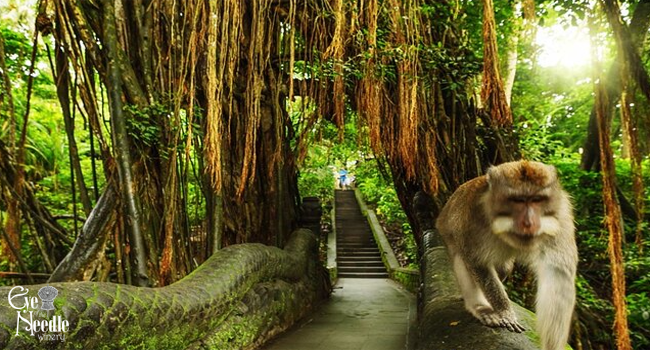
When planning a trip to the Sacred Monkey Forest in Ubud, it is essential to be prepared and informed to ensure a safe and memorable experience. The forest is not just a tourist attraction but a sanctuary that houses hundreds of free-roaming monkeys and sacred temples. As a visitor, understanding the rules and guidelines helps protect both you and the monkeys, ensuring a harmonious coexistence within this sacred environment. The Sacred Monkey Forest in Ubud management has put in place several rules and facilities to provide a safe and enjoyable visit for everyone.
Whether you are exploring the lush trails, observing the Balinese long-tailed macaques, or admiring the ancient temples, there are key tips to keep in mind to enhance your visit. Knowing how to interact with the monkeys, what to avoid bringing into the forest, and what facilities are available can significantly improve your overall experience at the Sacred Monkey Forest in Ubud. Below, we provide a comprehensive guide on how to navigate the forest safely, what to expect, and how to make the most of your visit.
Guidelines for Interacting with Monkeys
Interacting with the monkeys in the Sacred Monkey Forest in Ubud can be an enjoyable part of the experience, but it is essential to follow certain guidelines to ensure both your safety and that of the animals. The Balinese long-tailed macaques are generally accustomed to human presence, but they are still wild animals and can be unpredictable. Here are some essential tips for interacting with the monkeys:
- Avoid Direct Eye Contact: Staring directly into a monkey’s eyes can be perceived as a threat. Instead, keep your gaze soft and avoid prolonged eye contact.
- Do Not Feed the Monkeys: Feeding the monkeys is strictly prohibited. The Sacred Monkey Forest in Ubud provides them with a balanced diet, and feeding them outside food can lead to aggressive behavior and health issues.
- Keep Your Belongings Secure: Monkeys are naturally curious and may try to snatch items such as bags, sunglasses, or cameras. Ensure your belongings are securely zipped and avoid dangling accessories.
- Stay Calm if a Monkey Jumps on You: If a monkey approaches or jumps on you, do not panic. Remain calm, do not make sudden movements, and avoid touching or pushing the monkey away. It will usually jump off after a few moments.
By adhering to these guidelines, you can have a safe and respectful interaction with the monkeys, ensuring that your visit to the Sacred Monkey Forest in Ubud is both pleasant and memorable.
What Not to Bring and Wear Inside the Forest
Visitors to the Sacred Monkey Forest in Ubud should be mindful of what they bring and wear inside the sanctuary. Certain items and clothing choices can attract unwanted attention from the monkeys or cause safety concerns. Here are some things to keep in mind:
- Avoid Carrying Plastic Bags or Wrappers: The monkeys in the Sacred Monkey Forest in Ubud have learned to associate plastic bags with food. It is best to avoid bringing any plastic bags, paper bags, or items that rustle and could attract the monkeys.
- Leave Food and Snacks Outside: Do not carry food or drinks into the forest, as the smell can attract monkeys. This can lead to aggressive behavior if they attempt to snatch food from you.
- Wear Comfortable and Modest Clothing: Since the Sacred Monkey Forest in Ubud is also a sacred site, it is advisable to dress modestly. Additionally, wear comfortable shoes for walking the forest’s trails.
- Avoid Loose Jewelry and Accessories: Monkeys may be tempted to grab loose items such as necklaces, earrings, or hats. It’s better to leave such accessories behind to prevent them from being taken or damaged.
By knowing what to avoid bringing and wearing, you can prevent unnecessary incidents and ensure a smooth visit to the Sacred Monkey Forest in Ubud.
Available Facilities and Visitor Amenities
The Sacred Monkey Forest in Ubud is well-equipped with various facilities to ensure a comfortable and enjoyable visit. The management has made several amenities available to cater to the needs of tourists while maintaining the sanctity of the forest environment. Here is what you can expect in terms of facilities:
- Toilets and Rest Areas: The forest is equipped with clean and well-maintained restrooms located near the entrance and at several points along the trails. There are also rest areas where visitors can take a break and relax.
- Guides and Information Centers: Knowledgeable guides are available for hire if you wish to have a more informative tour of the Sacred Monkey Forest in Ubud. Information boards are also placed throughout the forest, providing details about the monkeys, temples, and conservation efforts.
- First Aid and Medical Assistance: A first-aid center is available on-site, staffed with trained personnel who can assist in case of minor injuries or incidents involving monkeys.
- Souvenir Shops and Cafés: There are several shops near the entrance where visitors can buy souvenirs, and cafes offer refreshments and snacks. These facilities provide a comfortable spot to relax after exploring the forest.
These amenities are designed to ensure that visitors have a pleasant experience while respecting the natural and sacred environment of the Sacred Monkey Forest in Ubud. Following the provided tips and making use of the available facilities will help ensure a safe and enjoyable visit to this unique destination.
Why You Should Visit the Sacred Monkey Forest

The Sacred Monkey Forest in Ubud is more than just a tourist attraction; it is a destination that offers a deep, enriching experience that connects visitors with nature, culture, and spirituality. Situated in the heart of Bali’s cultural hub, Ubud, this sacred sanctuary provides an opportunity to explore a vibrant ecosystem, interact with the playful Balinese long-tailed macaques, and witness the rich traditions of Balinese Hinduism through its ancient temples. A visit to the Sacred Monkey Forest in Ubud is not only an adventure but also an educational and spiritual journey that allows one to appreciate the harmony between humans, nature, and the divine.
For those who seek more than just sightseeing, the Sacred Monkey Forest in Ubud offers an immersive experience that combines natural beauty, cultural heritage, and spiritual insight. From exploring its dense green canopy and unique flora to observing the dynamic social interactions of the monkeys and the intricate temple architecture, there are countless reasons why the Sacred Monkey Forest should be on every traveler’s itinerary. Below, we delve into some of the key reasons why you should not miss this enchanting destination.
A Blend of Nature, Culture, and Spirituality
The Sacred Monkey Forest in Ubud is a rare blend of natural beauty, cultural heritage, and spiritual significance that provides a comprehensive experience unlike any other. The forest is home to over 186 species of trees, including several that hold spiritual significance to the Balinese people. The towering Banyan trees, for instance, are considered sacred and believed to house spirits. The dense foliage and serene atmosphere create a peaceful environment that is perfect for meditation, relaxation, and spiritual reflection.
In addition to its natural charm, the Sacred Monkey Forest in Ubud is also a site of great cultural and spiritual importance. The three main temples within the forest—Pura Dalem Agung Padangtegal, Pura Beji, and Pura Prajapati—are still used by the local community for religious ceremonies and rituals. These temples reflect the deep connection the Balinese have with their spiritual and natural world, providing visitors with a unique opportunity to observe and learn about Balinese Hindu practices and beliefs. By visiting the Sacred Monkey Forest in Ubud, you get to experience a harmonious blend of the island’s natural, cultural, and spiritual elements all in one place.
Best Times to Visit for a Peaceful Experience
To fully enjoy the tranquility and beauty of the Sacred Monkey Forest in Ubud, timing your visit is crucial. The forest can get quite busy, especially during peak tourist seasons and midday when large tour groups tend to arrive. For a more peaceful and intimate experience, it is best to visit early in the morning or late in the afternoon. During these times, the forest is less crowded, and the weather is cooler, making it ideal for leisurely walks and quiet reflection.
Early mornings also offer the opportunity to witness the forest waking up. The soft sunlight filtering through the trees creates a magical atmosphere, and the monkeys are more active and playful during this time. Late afternoons, on the other hand, provide a different kind of serenity as the day winds down. Choosing the right time to visit the Sacred Monkey Forest in Ubud can greatly enhance your experience, allowing you to connect more deeply with the environment and enjoy the forest’s natural and spiritual beauty at a slower pace.
Photography Opportunities: Capturing the Beauty of the Forest and its Inhabitants
For photography enthusiasts, the Sacred Monkey Forest in Ubud is a paradise filled with countless opportunities to capture breathtaking moments. The forest’s dense greenery, winding paths, and ancient temples provide a stunning backdrop for landscape photography. Early mornings or late afternoons, when the light is softer and more diffuse, offer the best conditions for capturing the natural beauty of the forest.
The Balinese long-tailed macaques themselves are a favorite subject for photographers. Their expressive faces, dynamic social interactions, and playful antics provide endless opportunities for wildlife photography. Whether it’s a close-up shot of a monkey grooming another, a wide-angle shot of them swinging through the trees, or a candid moment of a monkey sitting contemplatively among the ruins of a temple, the Sacred Monkey Forest in Ubud offers a wealth of photographic subjects.
Additionally, the ancient temples with their intricate carvings and moss-covered statues add an element of mystique to photographs, blending nature and culture in a single frame. To make the most of the photography opportunities in the Sacred Monkey Forest in Ubud, consider bringing a camera with a good zoom lens and visiting during off-peak hours to avoid the crowds and capture the serene ambiance of this magical place.
Planning Your Trip to Ubud
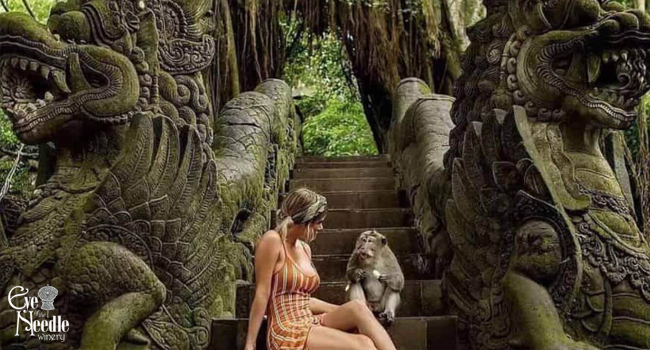
Planning a trip to Ubud, the cultural heart of Bali, offers an opportunity to experience a mix of nature, spirituality, and Balinese culture. The Sacred Monkey Forest in Ubud is a central attraction, but the surrounding area also boasts numerous other sites and experiences that can enrich your visit. To make the most of your time in Ubud, it is essential to plan your trip well, including considering nearby attractions, choosing the right tours and guides, and selecting the best accommodation options that suit your needs. Combining a visit to the Sacred Monkey Forest in Ubud with other local highlights ensures a more immersive experience in this enchanting part of Bali.
When planning your trip, think about what type of experience you seek—whether it’s a spiritual journey, an adventure through nature, or an exploration of local art and culture. Ubud has something for everyone, from serene temples and vibrant markets to scenic rice terraces and traditional Balinese performances. Below, we provide a guide to help you plan your perfect trip, including nearby attractions, recommended tours, and the best places to stay near the Sacred Monkey Forest in Ubud.
Nearby Attractions to Combine with Your Visit
When visiting the Sacred Monkey Forest in Ubud, it’s worthwhile to explore other nearby attractions to make the most of your day. Ubud is rich in culture, natural beauty, and spirituality, offering several must-see sites that can be easily combined with a visit to the monkey forest:
- Ubud Palace (Puri Saren Agung): Located just a short distance from the Sacred Monkey Forest in Ubud, the Ubud Palace is a historical landmark where the royal family of Ubud still resides. The palace features traditional Balinese architecture and often hosts cultural performances in the evenings.
- Tegallalang Rice Terraces: A 20-minute drive from the Sacred Monkey Forest in Ubud, these iconic rice terraces offer breathtaking views and an opportunity to learn about traditional Balinese farming techniques. The area also has cafes and swing spots for unique photo opportunities.
- Tirta Empul Temple: About 30 minutes from Ubud, this holy water temple is known for its sacred spring where Balinese Hindus perform purification rituals. A visit here can be a serene and spiritual addition to your itinerary.
- Campuhan Ridge Walk: For those looking to enjoy nature, this scenic walk offers stunning views of the Ubud countryside and is an excellent way to relax after visiting the Sacred Monkey Forest in Ubud.
Combining these attractions with your visit to the Sacred Monkey Forest in Ubud can provide a fuller experience of what Ubud has to offer, from cultural landmarks to natural beauty.
Recommended Local Tours and Guides
Booking a local tour or hiring a guide can enhance your experience when visiting the Sacred Monkey Forest in Ubud and exploring the wider area. Local guides provide insightful commentary on the cultural, historical, and natural aspects of the sites you visit, enriching your understanding and appreciation of Bali. Some recommended options include:
- Full-Day Ubud Tours: Many travel companies offer full-day tours that include the Sacred Monkey Forest in Ubud, Ubud Palace, Tegallalang Rice Terraces, and Tirta Empul Temple. These tours often include transportation, entrance fees, and a knowledgeable guide who can explain the significance of each site.
- Private Customized Tours: For a more personalized experience, consider booking a private tour where you can customize the itinerary according to your interests. This option allows for more flexibility, whether you want to spend more time exploring the Sacred Monkey Forest in Ubud or visiting other cultural landmarks.
- Eco Tours and Adventure Trips: For those interested in sustainable tourism and outdoor adventures, eco tours offer a unique way to experience Ubud’s natural beauty. These tours might include guided treks through rice fields, visits to organic farms, or even cycling trips around Ubud’s countryside.
Using a local guide or joining a tour can help you get the most out of your visit to the Sacred Monkey Forest in Ubud and the surrounding attractions, ensuring a well-rounded experience of Ubud.
Accommodation Options Close to the Monkey Forest
Staying near the Sacred Monkey Forest in Ubud provides easy access to one of Ubud’s main attractions while keeping you close to other significant sites in the area. Ubud offers a range of accommodations that cater to different preferences and budgets, from luxury resorts to budget-friendly guesthouses:
- Luxury Resorts: For those looking for a more indulgent stay, there are several luxury resorts near the Sacred Monkey Forest in Ubud that offer high-end amenities such as private villas, infinity pools, spa services, and gourmet dining. Options like The Ubud Village Resort & Spa and Alaya Resort Ubud are popular choices.
- Mid-Range Hotels and Boutique Stays: For travelers seeking comfort without breaking the bank, mid-range hotels and boutique accommodations provide a great balance of affordability and luxury. These properties often offer charming Balinese decor, on-site restaurants, and pools, such as Artini 2 Cottages or Champlung Sari Hotel Ubud, which is located right next to the monkey forest.
- Budget Guesthouses and Homestays: For those traveling on a budget, Ubud is filled with affordable guesthouses and homestays that offer a comfortable stay with friendly local hosts. Staying in a homestay also provides an opportunity to experience Balinese hospitality and culture up close. Options like Nyoman Warta Guest House and Tegal Sari Accommodation offer budget-friendly stays close to the Sacred Monkey Forest in Ubud.
Choosing the right accommodation will depend on your travel style, budget, and the type of experience you want to have. Whether you prefer luxury or simplicity, staying close to the Sacred Monkey Forest in Ubud ensures you are well-positioned to explore Ubud’s many wonders.
The Sacred Monkey Forest in Ubud is more than just a tourist destination; it is a sanctuary where nature, culture, and spirituality meet. Visiting this unique site offers an opportunity to immerse yourself in the natural beauty of Bali while also gaining a deeper understanding of its cultural and spiritual significance. From interacting with the playful Balinese long-tailed macaques to exploring ancient temples nestled among lush greenery, every moment spent here creates lasting memories.
Whether you are a nature lover, a cultural enthusiast, or a spiritual seeker, the Sacred Monkey Forest in Ubud provides an enriching experience that goes beyond the usual tourist attractions. Plan your visit well, respect the guidelines, and take the time to explore not just the forest, but also the surrounding wonders of Ubud. This magical place invites you to reconnect with nature and discover the harmony that lies at the heart of Balinese culture.
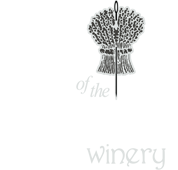



Leave a Reply